Fostering Community and Understanding
At Plimoth Patuxet, young learners in our Summer Camp programs explored the connections that exist between their modern experience of self and community and that of the people and communities of the 17th century.
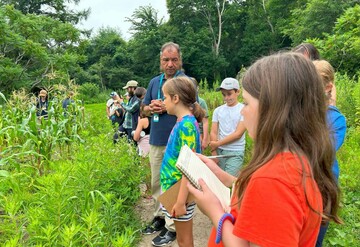
Plimoth Patuxet Summer Camps create hands-on experiences with history for young learners. The programs foster curiosity and respect for the people, places, and ideas of Indigenous and European communities along these shores of change in the 17th century. In 2024, the Museum offered two distinct weeks of Camp, each with its own theme to examine. These educational Camps are valuable summer learning opportunities for young people to grasp history in a new light and discover their own place and story in the past.
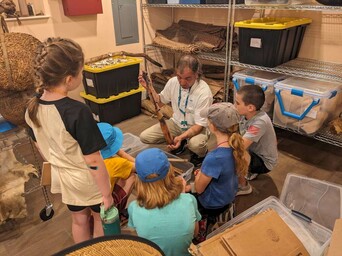
Won’t You Be My Neighbor?
Throughout this first Camp of the summer, participants discovered what it was like to live and work in 17th-century
Patuxet and Plymouth.
They began their journey at the Historic Patuxet Homesite, where they spent time with Indigenous Museum Educators to learn about Wampanoag lifeways, material culture, and gardening. Embracing their new role as young historians at the Museum, campers were tasked with curating materials in the winter wetu. While planning their displays, they took in the historical, cultural, and material significance of the rich variety of artifacts they were working with.
Following their eye-opening program on the Historic Patuxet Homesite, the campers visited the 17th-Century English Village to discover what life was like in Plymouth Colony. From chores like laundry and scullery, to tasks that charged them with making the tools to perform those chores, like broom making, the young historians learned how homes were maintained in the past and discovered similarities with their own modern experience.
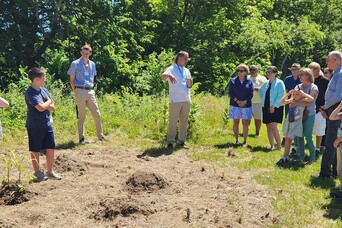
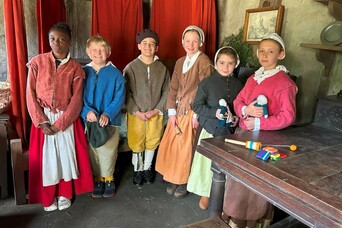
Along the Shores of Change
A new group of young learners immersed themselves in the 17th century for the second Camp offering of the summer.
Taking on the task of the Museums' Public History Performers, each camper was asked to represent a real Mayflower passenger Pilgrim – from William Bradford to Susanna Winslow. Through the eyes of their new historic identity, campers explored the events and ideas that led to the Pilgrims' decision to leave Europe in September of 1620.
Their journey continued as they discovered and learned about the trials and tribulations of the famous Mayflower voyage, the Pilgrims' arrival in the Wampanoag homelands in November of 1620, and the sequence of events that unfolded along these shores of change through 1627. After experiencing the 17th century of their assigned historical figures, the young historians shared what they had learned and discovered with family and friends, much like the Museum shares our discoveries through decades of research with the world.


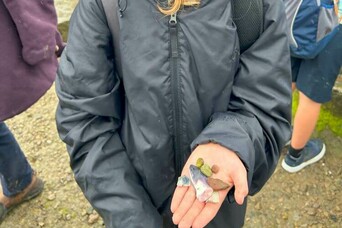
With the generous support of donors and members, Plimoth Patuxet is able to advance its educational mission and proudly foster exploration of 17th-century life. Their philanthropic investment enables us to work together in encouraging learning from those who came before us. Through this important work, known histories are broadened and understanding is revealed. These rich, experiential learning opportunities deepen understanding of the connections between the 17th century, today, and the ongoing American experiment in self-government.